Parenting(Age 5 to 8) | Academic | General | Jun 23, 2020
Introduction: Molecular Biology

Introduction:
Molecular biology is the branch of biology that deals with the study of living things on the molecular level. These molecules are the structural and functional unit of living things. Their study and understanding helps us understand life and life processes in a more elaborated manner.
Molecular biology co-exists with other branches of science like genetics and biochemistry.
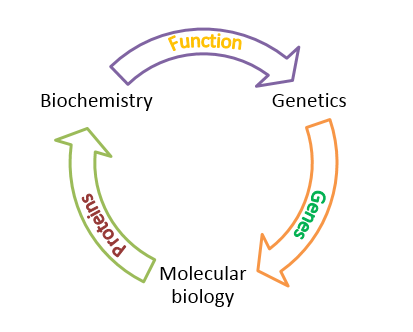
Basis of Molecular Biology:
Central Dogma of life or Central Dogma of molecular biology describes the flow of genetic material which is present in form of DNA. This is converted to RNA which in turn gives instructions to form the functional proteins.
- The process of making new DNA strands from pre-existing DNA is called DNA replication.
- The process of passing on the genetic information from DNA to RNA is called Transcription.
- The process of formation of proteins from the information passed on from RNA is called Translation.
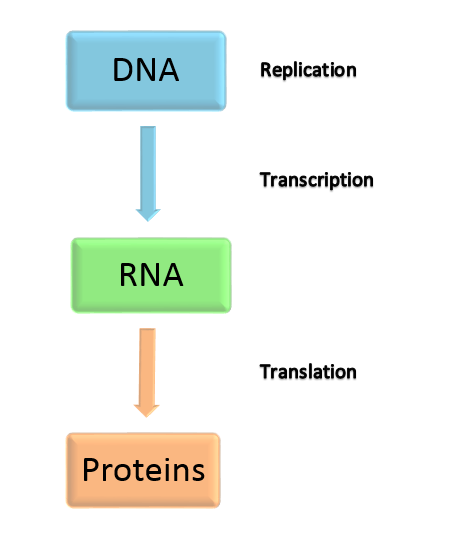
The DNA
DNA or Deoxyribosenucleic acid is a genetic material present in all living organisms. It contains genetic codes containing information in form of molecule sequences. It is responsible for the functioning of any organism.
Structure of DNA
DNA has a double helix structure and is made up of two strands going parallel to each other. The two strands twist along one another to form a sort of spiral staircase. Each strand is made up of the following:
- Chain comprising of phosphate group: that makes the backbone of the structure.
- Pentose sugar: deoxyribose sugar.
- A nitrogenous base: adenine, thymine, cytosine and guanine.
The two strands of DNA are joined together by hydrogen bonds between nitrogenous bases of these strands. Adenine always forms double hydrogen bond with Thymine on the opposite strand and cytosine always forms triple hydrogen bond with guanine on the opposite strand.
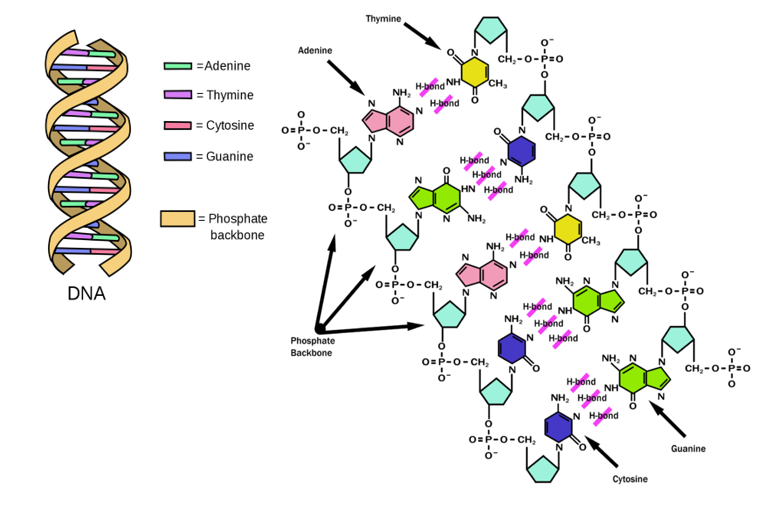
DNA Replication
DNA replicates to form new DNA strand before cell division.
The Process:
- The hydrogen bonds in the double stranded DNA are broken and the DNA helix unwinds by the action of enzyme Helicase forming a replication fork.
- Topoisomerase/ gyrase helps to relive the torque build up because of the unwinding in the DNA strand where hydrogen bonds are yet to be broken.
- Single stranded binding proteins stick to both the single strands of DNA ensuring that the hydrogen bonds does not stick the two strands of DNA back together.
- Replication always occurs in the direction of 5’ to 3’ end. Once the DNA strands are separated, RNA primase produces RNA primers complementary to each single strand of DNA. These primers acts as templates for the synthesis of new DNA strand.
- Since the DNA strands are complementary to each other, when they unwind, one is in 3’ to 5’ direction while other is available in 5’ to 3’ direction for the replication. The strand that is unwound in 5’ to 3’ direction is directly synthesized as it keeps on unwinding. The other strand in synthesized in small fragments called Okazaki Fragments. The strand that is synthesized in one go is called the leading strand while the other strand that is synthesized in okazaki fragments is called the lagging strand.
- The DNA polymerase III reads the RNA primer and starts to synthesize the new nucleotides complementary to each single strand of DNA.
- After the nucleotides are added, the DNA polymerase I removes the RNA templates and replaces them with nucleotides. It also fills in the gaps on the lagging strand.
- Nuclease and DNA polymerase I and III then proofread the newly made stands of DNA and corrects if any error or mismatch of nucleotide occurs.
- Ligase then seals the nucleotides together and thus two new DNA strands are formed.
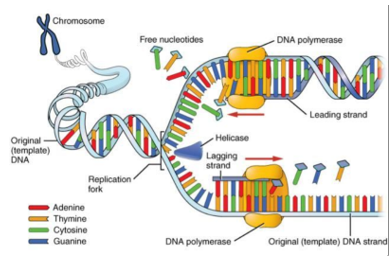
The RNA
The RNA or Ribose Nucleic Acid is a complex macromolecule similar to DNA. It helps in coding for protein synthesis and acts as genetic material in some viruses.
- The Structure of RNA is similar to the structure of DNA. The major differences are:
- Unlike DNA which is double stranded, RNA is single stranded.
- RNA had Ribose sugar instead of Deoxy-ribose sugar.
- The nitrogenous bases present in RNA are: adenine, cytosine, uracil, and guanine. RNA does not have thymine.
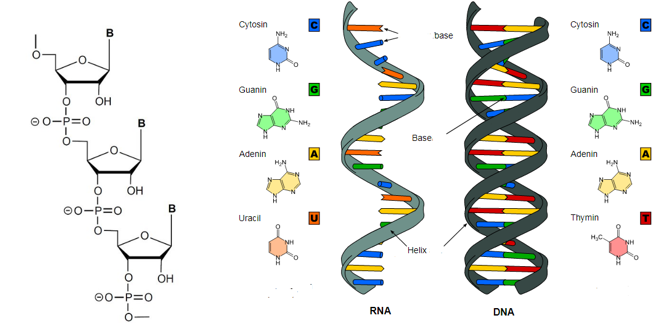
Transcription
Transcription in the molecular process in which the DNA code is copied into RNA by the action of RNA polymerase. Transcription takes place in the nucleus of the cell.
The process:
- Initiation: The enzyme RNA polymerase attached to the DNA strand. It breaks the hydrogen bonds between the DNA strands to form a transcription bubble.
- Elongation: The RNA polymerase then adds the RNA nucleotides that are complimentary to the DNA strand it has attached to. The Ribose sugar is attached to form the backbone of the Single stranded RNA.
- Termination: The hydrogen bonds between the DNA and RNA are broken now and we have new RNA strand.
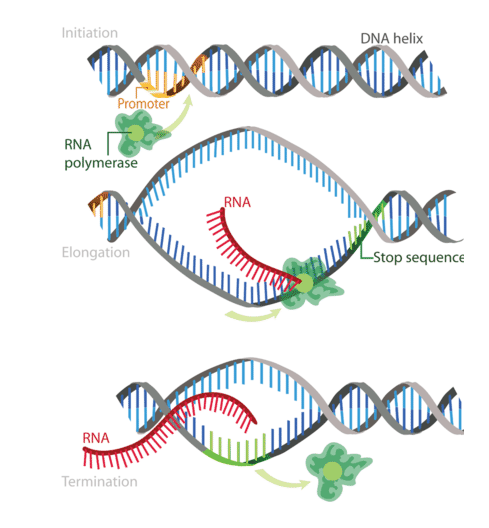
Translation
Translation is the process of formation of Proteins from the RNA. This takes place with the help of the ribosomes that are either in the cytoplasm or attached to the endoplasmic reticulum.
The process:
The process of translation takes place in three stages:
- The initiation
- The elongation
- The termination
- The Initiation: The ribosomes gather around the messenger RNA (mRNA) to read the sequence of nucleotides base pairs. They are read in sets of 3 called codon. The Ribosomes search for the code for starting of synthesis that is AUG which codes for Methionine.
- The Elongation: In this process one codon is read at a time. The RNA attached to the codon, reads it and through chemical reactions, new amino acids are attached to the pre-existing chain of amino acids. This is the protein synthesis.
- The termination: The process stops and new amino acids stop being made when the ribosome reads the stop codon which is UAG, UAA or UGA. One any of these stop codons is read, the amino acid chain is detached and released out of the ribosome.
After these three process take place, we a chain of amino acid. It folds in different 3D shapes and is transfer to different sites of the cell where they are required.
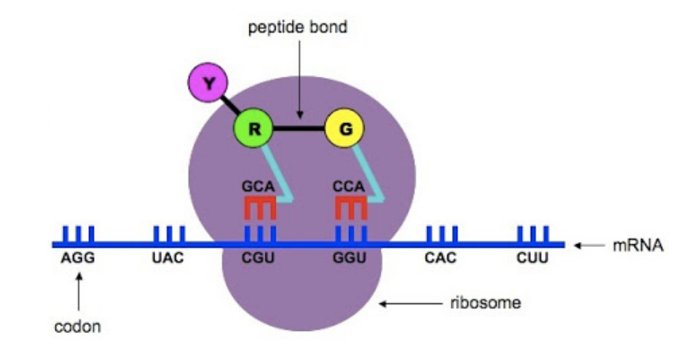














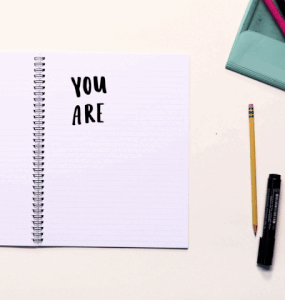

Post a Comment: